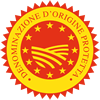Description
The Huile d'Olive d'Aix-en-Provence PDO is a virgin olive oil obtained mostly from the type of Aglandau, Capanne and Salonenque olive trees, which must be minimum 80% of the olive trees in the grove (a lower percentage of 60% is allowed until 2019). There can be also other secondary types as well as ancient local types as Bouteillan, Grossane, Picholine, Verdale des Bouches-du-Rhône, Ribier, Sabine, Saurine, Sigeoise and Triparde.
Production Area
The production area of Huile d'Olive d'Aix-en-Provence PDO covers the departments of Bouches-du-Rhône and Var and includes a small natural area in the region of Provence-Alpes-Azur.
Production Method
The trees used to pick up olives must be at least five years old and every tree must avail itself of a minimum area of 24 sq. m. and must be coppiced at least once every two years. The olives are picked up when ripe, directly from the tree without cutting them. The olives are stored in cases or open paloxes and given to the oil mill within four days and processed within seven days. Processing can be mechanically or physically made, cold at a maximum temperature of 30°C to separate the oils of the first extraction avoiding that heat could change the organoleptic values of the final product compromising its quality. The only treatments allowed are washing, decanting, centrifuging and filtering.
Appearance and Flavour
The colour of Huile d'Olive d'Aix-en-Provence PDO spans from green to gold green. Amongst the peculiar characteristics of this oil there are olfactory intensity dominated by vegetable scents like cut hay, green apple, tomato tree, artichoke and mint, but above all the strong organoleptic feature with aftertastes of butter, dry fruits and almonds.
History
The history of Huile d'Olive d'Aix-en-Provence PDO is the result of a long tradition. Indeed, the most ancient oil mills in Provence, discovered in the Island of Martigues, go back to the 4th century BC. The development of the cultivation of olive tree grew strongly after the Middle Ages and achieved its peak in the 12th century. The importance of this activity is also confirmed by the fact that with the task to control the goods and to supervise the arrival to oil mills after picking up was entrusted to the municipal police of Aix-en-Provence. The olive growers underwent a big crisis when the big olive growing region of Aix was subject to many devastating frosts. Now, the oil growing has registered to a new increase.
Gastronomy
The olive oil is a non-durable food which needs a right conservation to maintain its organoleptic features. So, it must be conserved in fresh rooms protected from the light, at a temperature between 14°C and 18°C, far from heat sources and from products releasing odours. In addition, it must be consumed within four-six months from pressing to taste it in the period when its flavour is at the top. The Huile d'Olive d'Aix-en-Provence PDO must be consumed raw to appreciate the flavours and tastes of vegetables and fruits. A low-temperature cooking is suggested to maintain all the olive oil features when preparing warm dishes. Huile d'Olive d'Aix-en-Provence PDO is the ideal seasoning for salads, sauces, grilled vegetables or simply on bread.
Marketing
The product is sold as Huile d'Olive d'Aix-en-Provence PDO. It is marketed packed in glass or metal sheet containers. Some packages show the BIO label which certificates the biologic production.
Distinctive Features
The strong and neat flavour, which made Huile d'Olive d'Aix-en-Provence PDO famous, is due to the percentage of green olives amongst the fruits gathered.






